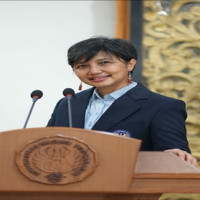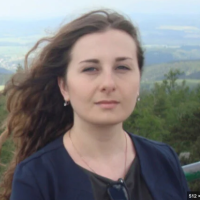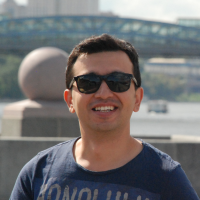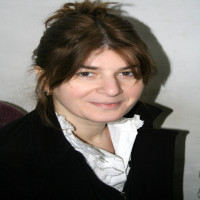Research Article
Aim & Scope
Journal for the Interdisciplinary Art and Education (JIAE) is an open access, quarterly academic journal published by Genç Bilge Publishing House, that publishes articles in the field of Art and Art Education an related interdisciplinary issues, with significant contributions to the understanding, discovering, creating new model, strategies, approaches and improvement of the performing, teaching and learning of arts.
The JIAE is an international refereed scientific journal which publishes review and research article, teaching techniques and activities for interdisciplinary art education, book reviews and interviews in English. Submitted articles are evaluated in a double blinded peer-reviewed fashion. The JIAE is an open access journal, published 4 issues a year; March, June, September, December. JIAE holds copyrights for all articles published in the journal.
Author Guidelines
Guide to Authors/Contributors
Article Types
Types of manuscripts for submission includes:
Results should be presented with clarity and precision. The results should be written in the past tense when describing findings in the authors' experiments. Previously published findings should be written in the present tense. Results should be explained, but largely without referring to the literature. Discussion, speculation and detailed interpretation of data should not be included in the Results but should be put into the Discussion section.
Discussion and Conclusion should interpret the findings in view of the results obtained in this and in past studies on this topic. State the conclusions in a few sentences at the end of the paper. The Results and Discussion sections can include subheadings, and when appropriate, both sections can be combined.
Acknowledgments of people, grants, funds, etc should be brief.
Biodata of Authors must be added before the references
In a recent study of student performance (Jones, 1998), …
In 1998, Jones compared student performance…
Example 3
A similar study was done of students learning to format research papers
("Using APA 6").
Example 4
Jones 's 1993 study found the following: Students often had difficulty using APA style, especially when it was their first time citing sources. This difficulty could be attributed to the fact that many students failed to purchase a style manual or to ask their teacher for help. (p.199)
Example 5.
In another study of students and research decisions, it was discovered that students succeeded with tutoring ("Tutoring and APA," n.d.).
Example 6.
A. P. Smith also claimed that many of her students had difficulties with APA style (personal communication, November 3, 2002).
References should be placed on a different page.
Cite references in alphabetical order by first author‘ surname and then his/her name.
References by a single author precede multi-authored works by same first author, regardless of date
List works by the same author(s) in chronological order, beginning with the earliest date of publication. If author has two works in same year, place in alphabetical order by first significant word in title. These works should be lettered consecutively (e.g. 2004a, 2004b).
Use "&" instead of "and" when listing multiple authors of a single work
If no author is given for a particular source, begin with and alphabetize by using the title of the work, which will be listed in place of the author.
All lines after the first line of each entry in your reference list should be indented from the left margin.
When referring to any work that is not a journal, such as a book, article, or web page, capitalize only the first letter of the first word of a title and subtitle, the first word after a colon or a dash in the title and proper nouns. Do not capitalize the first letter of the second word in a hyphenated compound word.
Capitalize all major words in journal titles
Italicize titles of longer works such as books and journals.
Author, A. A., Author, B. B., & Author, C. C. (Year). Title of article. Title of periodical, volume number, pages.
A nonperiodical (e.g., book, report, brochure, or audiovisual media)
Author, A. A. (Year of publication). Title of work: Capital letter also for subtitle. Location: Publisher.
Part of a nonperiodical (e.g., a book chapter or an article in a collection)
Author, A. A., & Author, B. B. (Year of publication). Title of chapter. In A. Editor & B. Editor (Eds.), Title of book (pages of chapter). Location: Publisher.
Article in an Internet Periodical
Author, A. A., & Author, B. B. (Date of publication). Title of article. Title of journal, volume number (issue number if available). Retrieved month day, year, from http://Web address.
Nonperiodical Internet Document (e.g., a Web page report)
Author, A. A., & Author, B. B. (Date of publication). Title of article. Retrieved month date, year, from http: //Web address.
Part of Nonperiodical Internet Document
Author, A. A., & Author, B. B. (Date of publication). Title of article. In Title of book or larger document (chapter or section number). Retrieved from http://Web address.
Journal article, more than six authors
Harris, M., Karper, E., Stacks, G., Hoffman, D., DeNiro, R., Cruz, P., et al. (2001). Writing labs and the Hollywood connection. Journal of Film and Writing, 44(3),213- 245.
Work discussed in secondary source
Coltheart, M., Curtis, B., Atkins, P., & Haller, M. (1993). Models of reading aloud: Dual- route and parallel-distributed-processing approaches. Psychological Review, 100, 589-608. In Seidenberg and McClelland's study (as cited in Coltheart, Curtis, Atkins, & Haller, 1993), …
Magazine, Bulletin article, one author
A review of a book, conference, workshop, database, etc.
Baumeister, R. F. (1993). Exposing the self-knowledge myth [Review of the book The self-knower: A hero under control]. Contemporary Psychology, 38, 466-467.
An entry in an encyclopedia
Bergmann, P. G. (1993). Relativity. In The new encyclopedia britannica (Vol, 26, pp. 501-508). Chicago: Encyclopedia Britannica
A print journal or newspaper article retrieved from an online database
Smyth, A. M., Parker, A. L., & Pease, D. L. (2002). A study of enjoyment of peas. Journal of Abnormal Eating, 8(3). Retrieved February 20, 2003, from PsycARTICLES database.
An online journal article
Kenneth, I. A. (2000). A Buddhist response to the nature of human rights. Journal of Buddhist Ethics, 8(4). Retrieved February 20, 2001, from http://www.cac.psu.edu/jbe/twocont.html
Chapter or section of an online document
The Foundation for a Better World. (2000). Pollution and banana cream pie. In Great chefs cook with chlorofluorocarbons and carbon monoxide (Chap. 3). Retrieved July 13, 2001, from http://www.bamm.com/cream/pollution/bananas.htm
Message posted to an online newsgroup, from, workshop, or discussion group
Frook, B. D. (1999, July 23). New inventions in the cyberworld of toylandia [Msg 25]. Message posted http://groups.earthlink.com/forum/messages/0025.html Harris, M. (Producer), & Turley, M. J. (Director). (2002). Writing Labs: A History
Copyright
Submission of a manuscript implies that the work described has not been published before (except in the form of an abstract or as part of a published lecture, or thesis) that it is not under consideration for publication elsewhere; that if and when the manuscript is accepted for publication, the authors agree to automatic transfer of the copyright to the JIAE. Details are given in under copyright item too.
Publication Ethics and Mal Publication Ethics and Malpractice Statement Ethic
Publication Ethics and Malpractice Statement
(According to Elsevier policies and COPE’s Best Practice Guidelines)
Duties of Reviewers
(According to Elsevier policies and COPE’s Best Practice Guidelines)
Disclosure and Conflict of Interest
Unpublished materials disclosed in a submitted manuscript must not be used in a reviewer’s own research without the express written consent of the author. Privileged information or ideas obtained through peer review must be kept confidential and not used for personal advantage. Reviewers should not consider manuscripts in which they have conflicts of interest resulting from competitive, collaborative, or other relationships or connections with any of the authors, companies, or institutions connected to the papers.
Note: Composed using the Publishing Ethics Resource Kit and in compliance with Elsevier recommendations
Ethical Principles and Publication Policy
JIAE Ethics Policy
A number of ethical policies have been developed by the editors and the editorial board to ensure the impartiality and ethics of the work to be published in the Journal fort he Interdisciplinary Art and Education (JIAE). These policies include processes related to authors, reviewers, editors and studies.The following ethical duties and responsibilities are written in the light of the guide and policies made by Committee on Publication Ethics (COPE).
Ethical Responsibilities of Authors
Authors submitting studies to the JIAE are expected to fulfill following ethical responsibilities:
The authors should obtain "Ethics Committee Approval" regarding their work.
Studies must be original and up-to-date. All reference works must be cited or quoted fully and accurately.
Names that do not contribute to the study are not to be specified as authors. Conflict of interest or relationships must be explained (if available).
Raw materials of submitted article(s) can be requested within the framework of evaluation processes. Authors must submit the requested data and information to editorial and science boards.
Authors are liable to cooperate with editor in informing journal editor or publisher, correcting or withdrawing in case that an inaccuracy or error is detected about any published or under-review study.
Authors are not to submit their studies to application processes of multiple journals.Any study published in other journal is not to be submitted to the JIAE.
Any under-review study submitted to another journal is not to be submitted to JIAE.
Any process such as adding-removing author, changing the order of authors cannot be demanded for a study under review process.
Ethical Responsibilities of Editors
The editor and field editors of JE should hold the following ethical responsibilities that are based on the guides "COPE Code of Conduct and Best Practice Guidelines for Journal Editors" and "COPE Best Practice Guidelines for Journal Editors" published as open Access by Committee on Publication Ethics (COPE)
General Tasks and Responsibilities
The editors have the following roles and responsibilities
Ensuring the development of the journal in national and international sense,
Managing processes to improve the quality of published studies,
Conducting processes to apply ethical rules for all shareholders of the journal,
Updating publishing and ethical policies with the purpose of bringing contribution to the development of the journal,
Organizing and updating website of the journal.
Relationships with Readers
Editors must consider readers’ feedbacks towards publishing, scope and ethics of the journal. They must improve the studies published in the JIAE in consideration of interests and needs of readers. In addition, they must be liable to respond the questions of readers in line with ethical rules.
Relationships with Authors
Responsibilities of editors to authors are as follows;
They must submit the studies to editorial board to decide whether the studies are to be sent to reviewers or not,
They must to inform authors about publishing and ethical policies,
They must prevent possible conflicts between authors and reviewers,
They carry out “Double-Blind Review” in a healthy way and to ensure an unbiased evaluation process,
They must assess the demands of authors towards not to send their studies to reviewers with whom they have conflict of interest,
They must affirm demands of authors to withdraw their studies under review process,
They must assess authors’ objections to reviewer and editor decisions/reports and to initiate a new review process where available.
Relationships with Reviewers
Responsibilities of editors to reviewers are as follows;
Editors must
Choose a suitable reviewer in related field of the study,
Ensure information and guidelines needed by reviewers during review process,
Monitor any conflict of interest between authors and reviewers,
Keep information of reviewer confidential,
Encourage reviewers to be unbiased,
Respond questions of reviewers about publishing and ethical policies,
Update the pool of reviewers with the purpose of improving,
Remind reviewers about timing,
Encourage reviewers to make constructive, polite and appropriate review.
Relationships with Editorial Board
Editors must
Arrange meetings with editorial board with certain intervals,
Provide information and guidelines to editorial board about publishing and ethical policies of the JIAE,
Improve the journal in consideration of feedbacks of the editorial board,
To ensure objectivity of the members of the editorial board,
To encourage editorial board to make review in scientific framework,
Author Rights:
Author(s) can;
Detect the reviewers to whom the studies should not be sent due to conflict of interest and/or other ethical reasons,
Withdraw their unpublished study during review process,
Oppose to reviewer reports and editor decisions,
Demand erratum for information errors or problematic areas in the given study to be published in the first issue due to error in fact during publication process.
Ethical Responsibilities of Reviewers
Studies submitted to the JIAE are reviewed by at least two reviewers in the related field. Ideas of editor or a third reviewer are asked in case of equity between negative and positive views on the article during reviewing process.
Double-blind review process has been adopted in the JIAE, authors and reviewers are not aware of each other’s identity,
Reviewers are expected to read publishing principles of the JIAE,
Reviewers should accept to review only the studies in their specialty fields, and not to accept reviewing the manuscript in the field of which they are not expert even for having information about the topic of the given article,
Reviewers should refuse reviewing when they realize they cannot be objective,
Reviewers should complete the review process in a certain period of time, and review on unbiased and confidentiality terms
Reviewers should refuse reviewing in case of a conflict of interest and inform editor about it,
Reviewers should inform editor when the reviewed manuscript has already been submitted to any other journal,
Reviewers should reviewing manuscript in a constructive and polite language, and not to comment personal views such as hospitality, insult and reflation,
Reviewers should make sure that the review is related to the content of any given manuscript. They should pay attention not to bring the effect of religion, race, sex, political views and so on to review process.
Journal Policy
Reviewing and Publishing
All manuscripts sent to the (JIAE) need to follow the principles below in order to get in the process of evaluation and publishing processes. The manuscripts which do not fulfill the requirements of publication principles and the writing rules are not accepted and kindly returned to the author(s).
The manuscripts should not be previously published work or should not be under consideration or peer review for publication elsewhere. Papers presented in congresses – on condition that has not been published as a full text in congress books – and manuscripts from dissertations should have a footnote including the necessary information. Author(s) have the responsibility of all contents in the manuscripts.
All manuscripts submitted to the JIAE are subjected to a screening by the editorial board in terms of scope and writing rules. Editorial Board may reject the submissions which do not comply with the principles of the JIAE. After the screening screening, all manuscripts are sent to at least two external/independent referees for blind review. The referees are given 30 days and a new referee is appointed if any one of them does not express an opinion in the given period of time. Manuscripts are required to have an “issuable” report by at least two referees in order to be published. In case of any rejection from one of the referees, a third (or forth if required) referee is appointed. Author(s) are responsible with the revisions (if any) recommended by the referee(s) in 30 days. The accepted manuscripts proceed to the publication process. After the proofreading process, a DOI number is assigned and the manuscript appears in Online First section. The manuscripts published Articles in Press section are printed in an upcoming issue depending on the decision of the Editorial Board. Authors may withdraw their work while in the pre-control phase. It is not possible to withdraw the studies in the referee evaluation.
Neither referee(s) nor author(s) know the personal information of each other. All this privacy policy is under the responsibility of the editorial office.
Plagiarism Detection
Before the submission all manuscripts submitted to JIAE must be screened for plagiarism using applications like iThenticate© and Turnitin© by the author(s) and a plagiarism report must be submitted with the manuscript. The similarity percentage for the complete work must be less than 15 % and less than 3 % from one source. However, it is necessary to review each similarity above %1 and decide whether it is necessary to revise the article for the good of the author(s). JIAE will immediately reject papers leading to plagiarism or self-plagiarism.
Open Access Policy
JIAE is an Open Access journal and provides immediate open access to its contents. The Journal aims to promote the development of global Open Access to scientific information and research. All the articles published in JIAE are licensed by "Creative Commons Attribution 4.0 International License".
Article Processing Charge
Articles that apply to the JIAE academic journal are taken in pre-review stage. Pre-review is done by the editorial board. Articles that do not have the necessary permissions, whose plagiarism report is negative and that are outside the coverage of the journal are rejected. Then, the Article Review Process starts, where there are at least two referees and blind. The decision to publish is taken for those who are successful in the referee process.
All articles published in JIAE are open access and freely available online, immediately upon publication. This is made possible by an article-processing charge (APC) that covers the range of publishing services we provide. This includes provision of online tools for editors and authors, reviewers, editors and reviewers progress payments, article copyediting, production and hosting, layout editing, liaison with abstracting and indexing services, and customer services.
As a matter of ethics, article Processing Charge is paid when the article is uploaded to the journal management system by the author. No editorial evaluation and review process are initiated without the payment. This payment does not indicate that the article uploaded by the author will certainly be published. This payment is only related to the article processing process.
As per the resolution passed by Turkish Higher Education Council at the General Assembly dated March 03, 2019, an article published in JGEDC can be included in the applications (declaration) for associate professorship since the journal falls under the clause of "Journals that charge fees -regardless of acceptance/rejection condition- during application".
“Türkiye Yükseköğretim Kurulu’nun 07.03.2019 tarihli Genel Kurulunda aldığı karar gereği, JGEDC’de yayınlanan bir makale Makale başvuru sırasında -kabul/red kararına bağlı olmaksızın ücret alan dergiler, maddesini karşıladığından doçentlik başvurularında (beyannamede) kullanılabilir.”
Article Processing Charge 850 TL (for Turkey), 100 GBP (other countries).
Subscription for per year: 850 TL (for Turkey), 100 GBP (other countries).
Article Publication Charge
JIAE does not charge article publishing fees.
Price Policy
There is no Article Processing or Publication Fee. JIAE is nonprofit academic journal, it has some sponsors. AYSTE association and ISIPAE congress. You can take informations from editorial email.
Indexes
Journal Boards
Editor-in-Chief

Asst.Prof.Dr., Fırat Altun, was born in Diyarbakır, Turkiye, and began his formal musical education at the Diyarbakır Anatolian Fine Arts High School, where he cultivated his foundational skills in music. His academic journey continued with a Bachelor’s degree in Music Education, during which he engaged deeply with the polyphonic traditions of Turkish music, advanced his technical and performance skills on the cello, and developed a rigorous understanding of choral conducting and aural skills. After completing his undergraduate studies, Fırat Altun furthered his academic pursuits with a Master’s degree in Music Education. His scholarly path then led him to the University of York at the United Kingdom, where he was awarded a competitive scholarship to undertake doctoral research at a leading institution in Music. His doctoral studies encompassed interdisciplinary research in music cognition and affective response, advanced compositional techniques, and ear training. In addition to his academic endeavors, he actively contributed as a cellist to various performances with symphony and chamber orchestras. Fırat Altun’s research interests lie at the intersection of music perception and cognition, composition, and performance, with a particular focus on the cognitive and cultural dynamics of musical structure. His work contributes to a deeper understanding of how music is perceived, composed, and performed across different cultural contexts.
Affiliation: Harran University, Education Faculty, Fine Art Department, Şanlıurfa, Turkiye. Email: firataltun@harran.edu.tr ORCID: 0000-0002-2435-4909
ResearchGate: https://www.researchgate.net/profile/Firat-Altun
Academiaedu: https://york.academia.edu/FıratALTUN
GoogleScholar: https://scholar.google.com/citations?user=eAhY16YAAAAJ&hl=tr
Advisory Board

Editors/Field Editors






International Editorial Board Member

Asmati Chibalashvili is an Associate Professor at Kyiv National P. I. Tchaikovsky Music Academy; Deputy Director for Research, Modern Art Research Institute of the National Academy of Arts of Ukraine; Member of the Ukrainian Composers’ Union. She graduated from the Odesa State Music Academy named after A. V. Nezhdanova (class of Prof. Karmella Tsepkolenko, 2006). Completed postgraduate studies at the Kyiv National P. I. Tchaikovsky Music Academy under Prof. Yevhen Stankovych (2010). Awarded a diploma by the Ambassador of Georgia to Ukraine for promoting Georgian art and developing Ukrainian–Georgian cultural relations (Kyiv, 2002). Winner of the 1st Prize at the International Competition of Young Composers Gradus ad Parnassum (Kyiv, 2016). Recipient of the Silver Medal of the National Academy of Arts of Ukraine (2021). VUIAS Fellow in the Open Society University Network/CEU Institute for Advanced Study (Budapest, 2023–2024). Nonresidential Visiting Scholar at Indiana University (2024–2025). Her creative work combines compositional practice with academic research, focusing on posthumanism, contemporary Ukrainian music, and the artistic documentation of social crises. Her recent projects experiment with multimedia and visual or performative elements to reflect on themes of resilience, transformation, and collective experience. Her music has been performed at numerous international festivals, including Two Days and Two Nights of New Music (Odesa, 2006–2024), Music Marine Fest (Odesa, 2006), Season Premiere (Kyiv, 2007), International Youth Music Forum (Kyiv, 2007, 2009, 2011), Music Tribune of Kyiv’s Youth (Kyiv, 2008), Young Composers of Ukraine (Lviv, 2009), GOGOLFEST (Kyiv, 2012, 2014), Days of New Music (Kharkiv, 2012), Contrasts (Lviv, 2013, 2022, 2024), Nordic Saxophone Festival (Aarhus, Denmark, 2016), World New Music Days ISCM (Vancouver, Canada, 2017), Kyiv Music Fest (2022), and Bouquet Kyiv Stage (2024), among others.

Vesna Svalina, Ph.D. (1968) is an associate professor in the field of music education and president of the Music Subdepartment at the Faculty of Education, Josip Juraj Strossmayer University of Osijek. Since 2020, she has also been working at the University of Slavonski Brod at the Department of Social Sciences and Humanities, and during the summer semester of the 2023/24 academic year, she taught courses at the University of Zagreb (Faculty of Teacher Education) titled Methodology of Music Education I and Methodology of Music Education III. She graduated from the study program of music pedagogy of the University of Osijek (Faculty of Education) in 1991. She holds a Master of Music Education degree from the University of Zagreb (Music Academy, 2009) and a doctoral degree in early education and compulsory education from the Faculty of Teacher Education of the University of Zagreb (2013). Dr. Svalina has published her scientific work in journals and conference proceedings, both nationally and internationally. She is the author of two books in the field of music pedagogy, has published over forty scientific papers, and has participated in numerous national and international scientific conferences (Cambridge – UK; Paris – France; Copenhagen - Denmark; Rostock – Germany; Cetinje – Montenegro; Ljubljana, Ruše – Slovenia; Beograd, Kragujevac – Serbia; Dubrovnik, Osijek, Pula, Split, Zadar, Zagreb – Croatia). Her scientific interest is focused on the music education in primary and secondary schools, musical giftedness, creativity in music education, music therapy and inclusive education, application of technology in music education, development of personal and social skills through music, listening to music as a teaching area. She participated in numerous international scientific conferences at home and abroad. From 2015 to 2016 she was head of the scientific research project Listening to music as an important subject area in the primary music curriculum. From 2009 to 2013 she was involved in the project Development of Creativity in Lifelong Teacher Education, and from 2018 to 2021 in the project Giftedness in the Artistic Field - Analysis of the Situation Among Primary School Pupils in Terms of Artistic and Musical Giftedness. From 2015 to 2018 she was managing editor of the journal Life and School. Today, she is a member of the editorial boards of two journals: SN Social Sciences, and Journal for the Interdisciplinary Art and Education. She has also given numerous concerts with the choirs, both in Croatia and abroad (Italy, Germany, Austria, Slovenia, Switzerland). She won numerous first prizes, both nationally and internationally, at different choir competitions (11 first prizes at national and 7 at international competitions). She also won three special prizes: for the best performance of the compulsory song, for the best interpretation of the song composed by a Croatian composer, and for the artistically most convincing conductor.




 Web
Web

Vildan IŞIK is an artist and scholar whose work explores the dynamic intersections of painting, holography, visual culture, and emerging technologies. Born in Osmaniye in 1973, she graduated from Dokuz Eylül University’s Faculty of Fine Arts, Department of Painting in 2000 with a thesis titled “The Problematic of Chance and Coincidence in the 20th Century.” She later obtained her master’s degree in 2006 from the Institute of Social Sciences at Cumhuriyet University, where her thesis—“Art Debates in Turkish Painting between 1930–1970 and the Artist at the Centre of the Debates: Bedri Rahmi Eyüboğlu”—focused on the role of Eyüboğlu in shaping critical discourse within modern Turkish art.
Her academic and artistic journey has consistently bridged theory and practice. In 2012, she conducted research on holography in Seoul, South Korea, which laid the groundwork for her subsequent doctoral thesis entitled “Holography as a Medium of Artistic Expression”, completed at Gazi University’s Institute of Fine Arts in 2013. This study culminated in a curated exhibition that explored the relationship between holography, painting, and photography. She earned her proficiency in art (the equivalent of a doctoral degree) and was awarded the title of Associate Professor in 2016.
Since then, she has been serving as a faculty member at Düzce University’s Faculty of Art, Design, and Architecture, the Department of Basic Art Sciences. Prior to her current appointment, she held various academic and institutional positions between 1999 and 2014.
Dr. Işık’s research and artistic practice center on the evolving relationship between art and digital media, with particular emphasis on artificial intelligence, iconography, and interdisciplinary aesthetics. She has published extensively in peer-reviewed journals and presented her work at numerous international conferences on art and design.
Her recent solo exhibitions, Urban Mutation (2024) and Holographic AI Glitch (2025), engage with themes such as algorithmic error, glitch aesthetics, and urban transformation. Through a practice that integrates critical theory, technological experimentation, and visual inquiry, Vildan IŞIK continues to make a multifaceted contribution to contemporary visual culture as both a researcher and an artist.

Received her Ph.D. degree from The Department of Architecture at Karadeniz Technical University in 2009. She has continued her work as a professor at the same institution. She has published articles in English and Turkish in various academic journals on topics such as architectural design, transparency in architecture, perception and meaning in architecture, and cultural heritage, which are her main research interests, and teaches various courses at the undergraduate and graduate levels in these fields.

Dr. Rita L. Irwin is an artist, researcher, and teacher deeply committed to the arts and education. She is a Distinguished University Scholar and Professor of Art Education in the Department of Curriculum and Pedagogy at the University of British Columbia in Vancouver, British Columbia, Canada. Rita served as Associate Dean of Teacher Education at UBC from 2005-2015 and Head of the Department of Curriculum Studies from 1999-2005. Rita has been an educational leader for a number of provincial, national and international organizations including being President of the Canadian Society for the Study of Education, Canadian Association of Curriculum Studies, Canadian Society for Education through Art, and the International Society for Education through Art.
Research Interest
Irwin's research interests have spanned in-service art education, teacher education, socio-cultural issues, curriculum practices across K-12 and informal learning settings, and a/r/tography. Well known co-edited books include Revisions: Readings in Canadian Art Teacher Education (with K. Grauer & M. Emme). Storying the World: The Contributions of Carl Leggo (with E. Hasebe-Ludt & A. Sinner), Provoking the Field: International Perspectives on Visual Arts PhDs in Education (with A. Sinner & J. Adams), Visually Provoking: Dissertations in Art Education (with A. Sinner & T. Jokela) and The Flaneur and Education Research: A Metaphor for Knowing, Being Ethical and New Data Production (with A. Lasczik).
AwardsIn recognition of her many accomplishments and commitments, she has received a number of awards for her scholarship, service and teaching including the distinction of Distinguished Fellow of the National Art Education Association in the USA, the Ted T. Aoki Award for Distinguished Service in Canadian Curriculum Studies (CACS), the Canadian Art Teacher of the Year Award (CSEA), the Elliot Eisner Lifetime Achievement Award (NAEA) and the Killam Award for Excellence in Mentoring (UBC).
Website: https://www.ritairwin.ca/
Language Editor

Layout

Editor-in-Chief-

Assoc.Prof. Gvantsa Ghvinjilia is a musicologist, a member of the Georgian Composers' Union, an Associate Professor at the Tbilisi State Conservatoire, and the Chair of its Dissertation Board. She is also a guest lecturer at the Shota Rustaveli Theatre and Film Georgia State University. She is a scholarship recipient of composer Zakaria Paliashvili and the President of Georgia. She holds a guest senior lecturer position at Shota Rustaveli Theatre and Cinema Tbilisi State University. Dr. Ghvinjilia was a jury member for the prestigious Tsinandali Awards in 2022
From 2006 to 2013, she held the roles of PR Manager and Head of the Literary Department at the Tbilisi Zakaria Paliashvili Opera and Ballet State Theatre. Her research interests encompass interdisciplinary research, transcultural studies, multimedia music, and AI-generated music. Within the framework of the Erasmus+ "Mobility+" program, she participated in working visits to Belgium, France, Poland, and Sweden. She regularly takes part in national and international conferences. Gvantsa Ghvinjilia is the Editor-in-Chief of the Journal of Music Theory and Transcultural Music Studies and the Journal for Interdisciplinary Art and Education. She is also a managing editor of the Rast Musicology Journal and the Kufa Journal of Arts. In addition, she serves as the Chair of the Rast Music Congress and the International Symposium on Interdisciplinary and Progressive Arts & Education.
Last publication: The Evolution of Music and Musician Students' Views on Ethical Dilemmas Related to Transhumanistic Music — https://dergipark.org.tr/en/pub/rastmd/issue/92822/1684433
ResearchGate profile: https://www.researchgate.net/profile/Gvantsa-Ghvinjilia?ev=hdr_xprf
Google Scholar: https://scholar.google.com/citations?user=JvTcsEoAAAAJ&hl=en
Website: https://gvantsaghvinjilia.com/












